SEO - Article Writing

The Undiscovered Beauty of Abra, Philippines
By Revelyn Lizardo
Abra, officially known as the Province of Abra, stands as a hidden gem nestled in the Cordillera Administrative Region of the Philippines, offering a blend of natural beauty and cultural richness waiting to be explored. Its capital, Bangued, serves as the heart of administration and commerce, reflecting the province's dynamic spirit.
Geographically, Abra is a landlocked province situated on the western side of the vast Cordillera mountain range in Northern Luzon. The landscape is a tapestry of deep valleys, rolling hills, and rugged mountains, creating a picturesque canvas of untouched wilderness. The western region of Abra holds a distinct charm with the Abra River meandering towards the coastal plains of Ilocos Sur, adding a touch of serenity to the province's natural allure.
Encompassing a land area of 4,199.72 square kilometers, Abra is a sanctuary for diverse flora and fauna, providing a habitat for a rich tapestry of plant and animal species. With a population of 250,985 as per the 2020 Census, Abra offers a tranquil environment, making it an ideal place for those seeking peace amidst nature's embrace.
Despite its landlocked status, Abra is a treasure trove of attractions waiting to be discovered. From the awe-inspiring landscapes that captivate the senses to the deep-rooted cultural heritage that weaves through the fabric of daily life, Abra offers a unique tapestry of experiences that beckon exploration and appreciation.
The people of Abra are renowned for their warmth and hospitality, embodying a culture steeped in tradition that is reflected in their vibrant festivals, intricate arts and crafts, and daily interactions. The local communities exude a sense of pride in their heritage, welcoming visitors with open arms and sharing the richness of their customs and traditions.
Some of the abundant natural and historical wonders in Abra include:

Tangadan Tunnel
Tangadan Tunnel is a significant landmark that holds historical and engineering importance. The tunnel is located along the Abra-Ilocos Sur national road and serves as a crucial transportation link between Abra and other parts of Luzon. Built during the American colonial period, the Tangadan Tunnel is recognized for its engineering marvel and historical significance.
The tunnel spans 40 meters and can be accessed from the Narvacan Junction after traversing a winding 9-kilometer road that cuts through the hills bordering Abra and Ilocos Sur. Tangadan Tunnel is a popular landmark in the province, often welcoming dignitaries and prominent visitors, showcasing the region's infrastructure and connectivity.
While Tangadan Tunnel is not a cave, it stands out as an important piece of Abra's history and serves as a notable point of interest for travelers exploring the region. The tunnel's construction and role in providing transportation access highlight its significance in connecting Abra to neighboring areas and contributing to the region's development.
If you're interested in learning about the historical and engineering aspects of Abra's infrastructure, a visit to Tangadan Tunnel offers insights into the region's past and the importance of transportation links in connecting communities and facilitating travel within Luzon.

Sapilang Falls
Sapilang Falls known as Sapilang Twin Falls, is a beautiful natural attraction in Barangay Sagap, Abra, Philippines. It is considered one of the sought-after waterfall destinations in the province. The falls are unique because cascades flow down the stream of the Abra River, hence the name "Sapilang Twin Falls."
To reach Sapilang Falls, visitors can start their journey from Barangay Sagap, where they embark on a relatively easy 30-minute hike to the falls. The trail passes through forested areas and may involve crossing a river, so be prepared to get your feet wet during the trek.
Sapilang Falls offers a serene and rustic environment, making it an ideal destination for nature lovers and adventure enthusiasts. The twin cascades of the falls create a picturesque setting that will captivate visitors.
If you're looking to explore the natural beauty of Abra, Sapilang Falls is a must-visit destination that promises a unique and memorable experience.
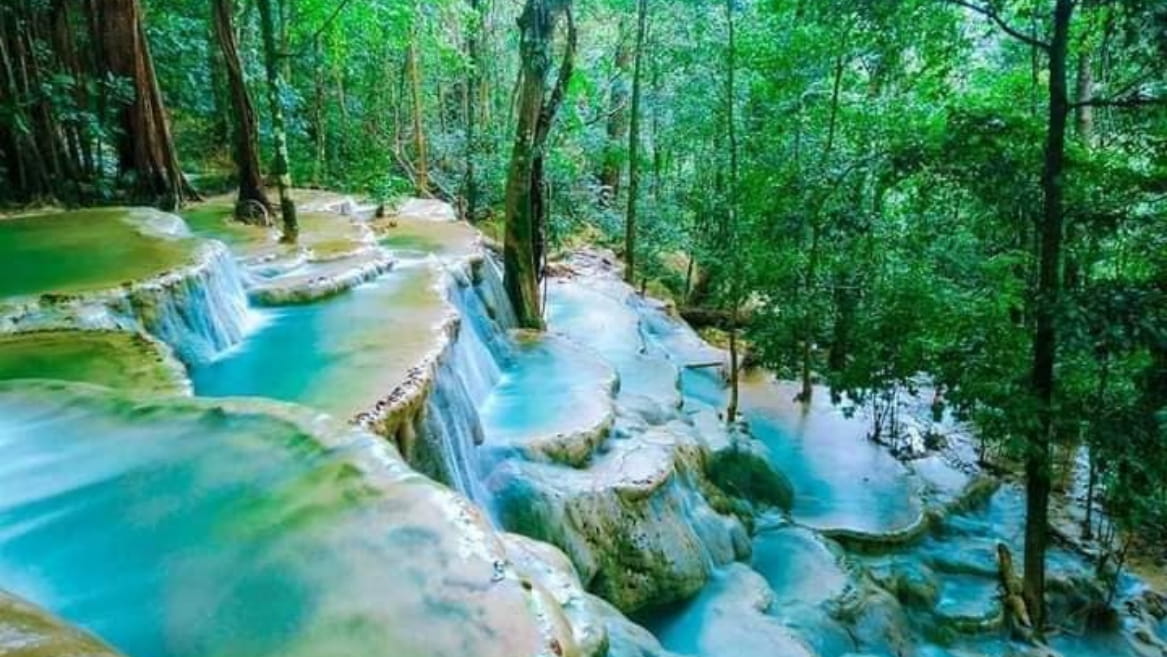 Kaparkan Falls
Kaparkan Falls
Kaparkan Falls also known as Mulawin Falls, is a majestic natural wonder in Sitio Kaparkan, Barangay Caganayan, Tineg, Abra Province, Philippines. This hidden gem is a multi-tiered waterfall and one of the top destinations in Abra known for its enchanting beauty.
The name "Kaparkan" is derived from the local dialect, meaning "stair-like," which aptly describes the stepped formation of the falls. Kaparkan Falls features a unique limestone terrace formation that adds to its allure and charm, making it a must-visit destination for nature enthusiasts and adventure seekers.
The falls are approximately 500 meters long and 60 meters wide, draining into the Tineg River. The best time to visit Kaparkan Falls is between July and October during the rainy season when the falls are at their most spectacular.
Kaparkan Falls has gained popularity as one of Abra's top tourist attractions, offering visitors a glimpse of the province's wilderness and natural beauty. It provides a serene and picturesque setting for travelers to immerse themselves in the enchanting paradise of Abra.
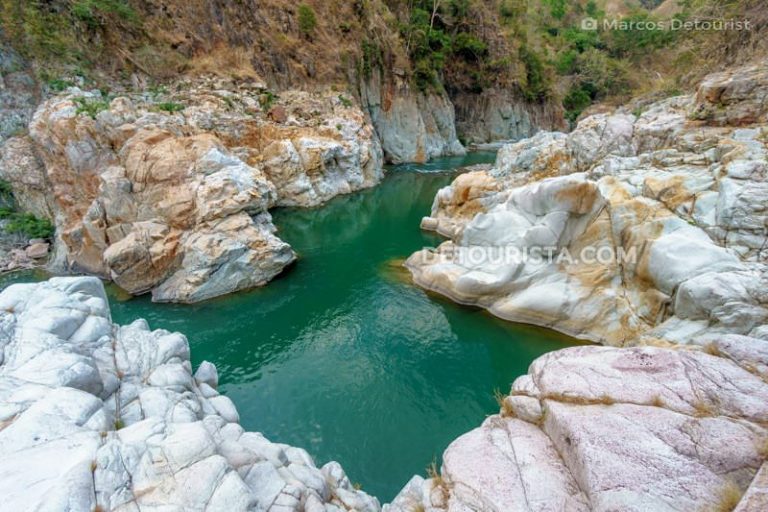
Piwek Rock Formations
Piwek Rock Formations is a picturesque natural rock formation situated in a river in Tineg, Abra, Philippines. To reach this stunning site, visitors typically embark on a journey involving a rough jeepney ride, a river crossing, hiking, and scrambling down the rock surfaces. The rock formations at Piwek resemble those found in the Tinipak River in Daraitan, Minalungao in Nueva Ecija, and Siitan River in Quirino, showcasing the beauty of nature in this remote location.
One of the notable activities at Piwek Rock Formations is cliff jumping, where thrill-seekers can experience an adrenaline-pumping 11-meter cliff jump into the river. This adds an element of adventure and excitement to the natural beauty of the area, making it a sought-after destination for those looking for an exhilarating experience.
Piwek Rock Formations offer a serene and picturesque setting, with gleaming white limestone rock formations lining the banks of the Tineg River. The combination of natural rock formations, river landscapes, and adventurous activities like cliff jumping makes Piwek Rock a unique and captivating spot for visitors to explore and enjoy.
If you're seeking a day of adventure and natural beauty in Abra, Piwek Rock Formations is a must-visit destination that promises an unforgettable experience amidst the stunning landscapes of Tineg.
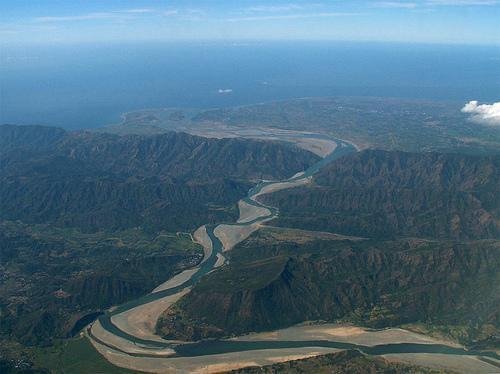
The Abra River
The Abra River also known as the Lagben River, is a significant river system in the Philippines located in the province of Abra within the Cordillera Autonomous Region (CAR). It is recognized as the seventh-largest river system in the country based on its watershed size. The Abra River has an estimated drainage area of 5,125 square kilometers (1,979 sq mi) and stretches approximately 179 kilometers (111 mi) from its source near Mount Data in Benguet province.
Known for its vast river basin, the Abra River is considered one of the widest rivers in the Philippines and boasts a rich natural landscape. It flows through various regions, including the Mountain Province and Ilocos Sur, before passing through Abra Province, where it bisects the Abra Valley. The river is also joined by the Tineg River, originating in the eastern uplands near the municipality of Dolores.
The Abra River offers a range of recreational activities for visitors, including river rafting and kayaking, providing an exhilarating experience for adventure seekers looking to explore the natural beauty of the region. The river's meandering path through the rugged mountains and valleys of Abra showcases the diverse and scenic landscapes that the province has to offer.
If you're looking to immerse yourself in the natural wonders of Abra and experience the beauty of its river system, a visit to the Abra River promises a memorable and enriching adventure amidst the picturesque surroundings of the Cordillera region.
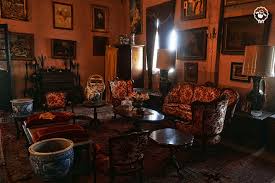
The Gabriela Silang Gallery of Fine Arts
The Gabriela Silang Galler of Fine Arts is a significant cultural institution located in Tayum, Abra, Philippines. This gallery is named after Gabriela Silang, who is widely recognized as the Joan of Arc of Ilocania for her role as the first female leader of a Filipino movement for independence from Spain. The gallery is a private museum owned by the Cariño family and showcases collections of retired Philippine Ambassador Rosario V. Carino.
Within the compound of the Gabriela Silang Gallery of Fine Arts, visitors can explore a diverse range of artifacts, artworks, and antiquities from the Philippine Revolution and various parts of the world. The collection includes paintings by renowned artists such as Juan Luna, Fernando Amorsolo, and Pablo Picasso, among others, offering a rich cultural and artistic experience for visitors.
The gallery serves as a hub for preserving and promoting the cultural heritage and artistic legacy of the region, providing insights into the history, artistry, and creativity of the Philippines and beyond. Visitors to the Gabriela Silang Gallery of Fine Arts can immerse themselves in a world of artistic expression, historical significance, and cultural appreciation.
If you're interested in exploring the vibrant art scene and cultural heritage of Abra, a visit to the Gabriela Silang Gallery of Fine Arts offers a unique opportunity to discover and appreciate the artistic treasures housed within this esteemed institution.
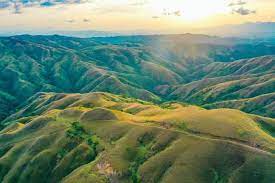
The Apao Rolling Hills
The Apao Rolling Hills in Apao, Tineg, Abra, Philippines, are renowned for their picturesque and majestic beauty, offering travelers a stunning landscape to explore and admire. These rolling hills provide a 360-degree view of wave-like formations covered in plain brown and green grasses, creating a serene and relaxing atmosphere for visitors.
Located approximately 50 kilometers north of Bangued, the capital of Abra, the Apao Rolling Hills are a series of wavelike hills that captivate with their natural charm. The roads leading to this remote part of Abra are improving, with many sections now concreted, making travel to the area more accessible for tourists.
Visitors to the Apao Rolling Hills can enjoy breathtaking views of the surrounding hills and valleys, making it an ideal spot for nature lovers, hikers, and photographers. The scenic viewpoints and natural wonders of the Apao Rolling Hills offer an unforgettable experience and an opportunity to immerse oneself in the beauty of Abra's landscapes.
Whether you're seeking a peaceful retreat in nature, a hiking adventure, or simply a place to appreciate the stunning vistas of rolling hills and grasslands, the Apao Rolling Hills in Abra promises a memorable and tranquil escape for travelers looking to explore the beauty of the Philippines.

Abualan Cave
Abualan Cave also known as Guano Cave, is a notable natural attraction located in San Juan, Abra, Philippines. Despite its narrow entrance, Abualan Cave features large chambers and columns inside, showcasing numerous stalactite and stalagmite rock formations that add to its allure. The cave is reminiscent of Longog Cave in Kapangan, Benguet, offering visitors a unique underground experience with its intriguing geological features.
Abualan Cave is recognized as a major tourist stop in the town of San Juan, Abra, attracting visitors with its natural beauty and fascinating rock formations. While the cave may not be fully developed, it provides an opportunity for adventurers and nature enthusiasts to witness the undeniable beauty of nature firsthand.
Exploring Abualan Cave offers a chance to delve into the subterranean world of Abra and appreciate the geological wonders that lie beneath the surface. The cave's chambers and formations provide a captivating experience for visitors looking to immerse themselves in the natural landscapes of the region.
If you're seeking an exciting adventure and a firsthand encounter with nature's beauty, a visit to Abualan Cave in San Juan, Abra, promises an unforgettable journey into the depths of the earth and an opportunity to marvel at the unique rock formations found within the cave.
Abra is more than just a province; it is a living testament to the Philippines' diverse cultural tapestry and untouched natural beauty. It is a destination where visitors can immerse themselves in the warmth of the locals, explore the wonders of nature, and uncover the hidden treasures that make Abra a truly unique and enchanting place to visit.

